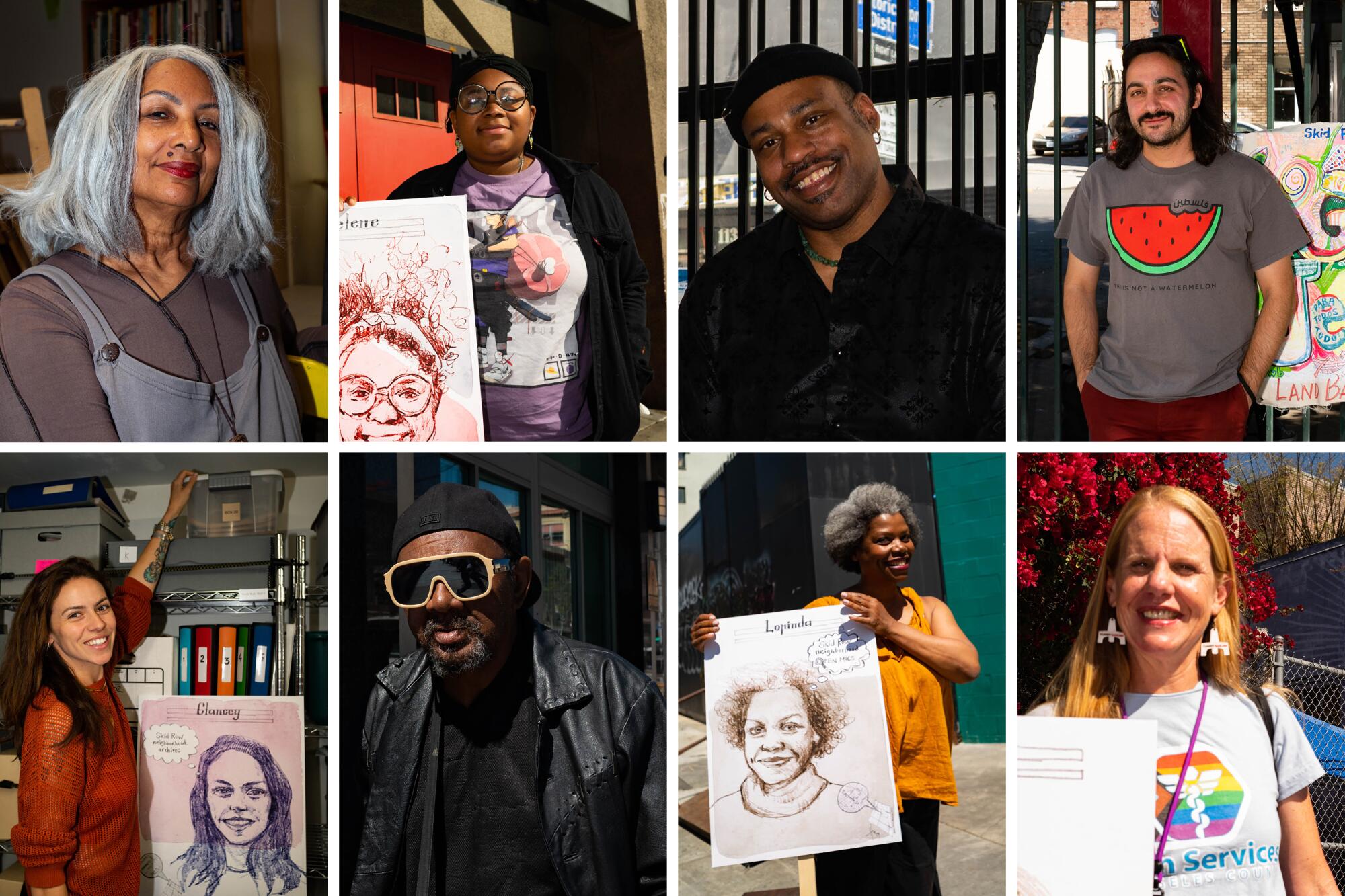
- Share via
Hundreds of artists are set to parade through the streets of Skid Row on Saturday, a brass band booming behind them, in a biennial celebration known as Walk the Talk, which has taken place in Los Angeles since 2012.
Put on by the Los Angeles Poverty Department — a performance group and arts program founded by director-performer-activist John Malpede in 1985 — the parade honors the neighborhood’s artists, activists and community members.
“We wanted to acknowledge the breadth of people that are engaged with bettering the community, and especially the residents who might not be as visible as some of the other people,” Malpede said. Too many people see Skid Row as a transient space, and, in many ways, Walk the Talk is about acknowledging Skid Row as a home, including a home to artists.
“Skid Row, it’s a gregarious community,” Malpede says.
Along the route Saturday, several people will be holding up smiling portraits of themselves, part of a long-held tradition in which the parade honors people from the neighborhood. This year’s portraits were created by Armenian artist Hayk Makhmuryan, who imagines honorees as landmarks of the neighborhood.
Ahead of Walk the Talk, a number of the honorees spoke about what the neighborhood has taught them about home and belonging. The conversations have been edited for length and clarity.
Hayk Makhmuryan, art worker, community organizer and founder of Doodles Without Borders
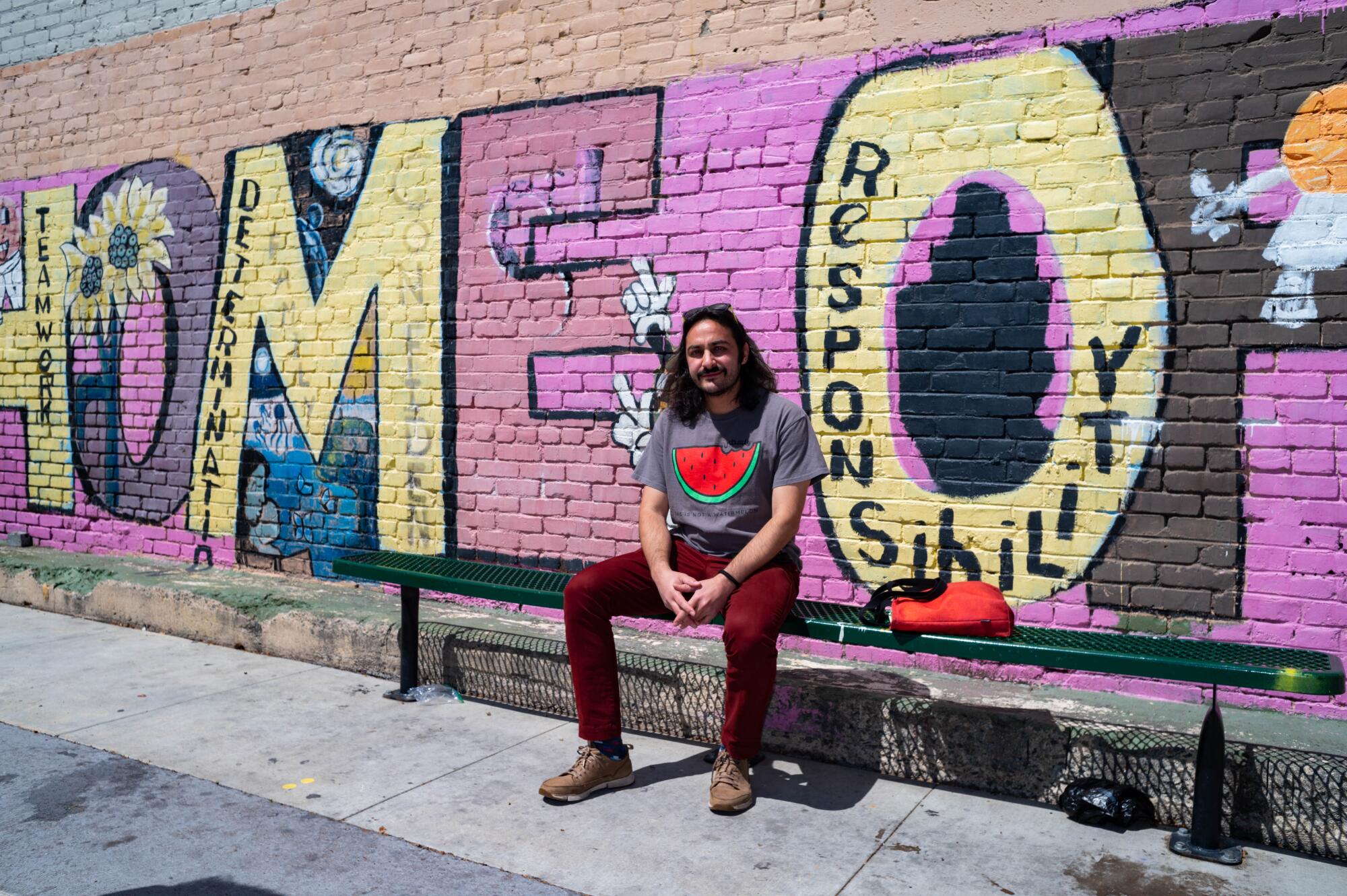
Each of the portraits has a map of a Skid Row neighborhood — 3rd to 7th and Alameda to Main — and then zooms in on one part and imagines, for instance, a street being named after Gary Brown. The work that happens in the Skid Row neighborhood is not in a vacuum. It’s part of the larger work. It’s important when we make global connections — there is a genocide happening in Palestine now — to ask how it is related. Because actually, it is related to things that happen that are sometimes very local. One direct thing is that the money that’s not going to places like the Skid Row neighborhood is going overseas to bombs.
Linda Leigh, artist, healer, advocate involved with Street Symphony, Urban Voices Project, Studio 526, Skid Row Coffee, LA CAN Food and Wellness Committee, Skid Row Community Refresh Spot and the Skid Row Action Plan
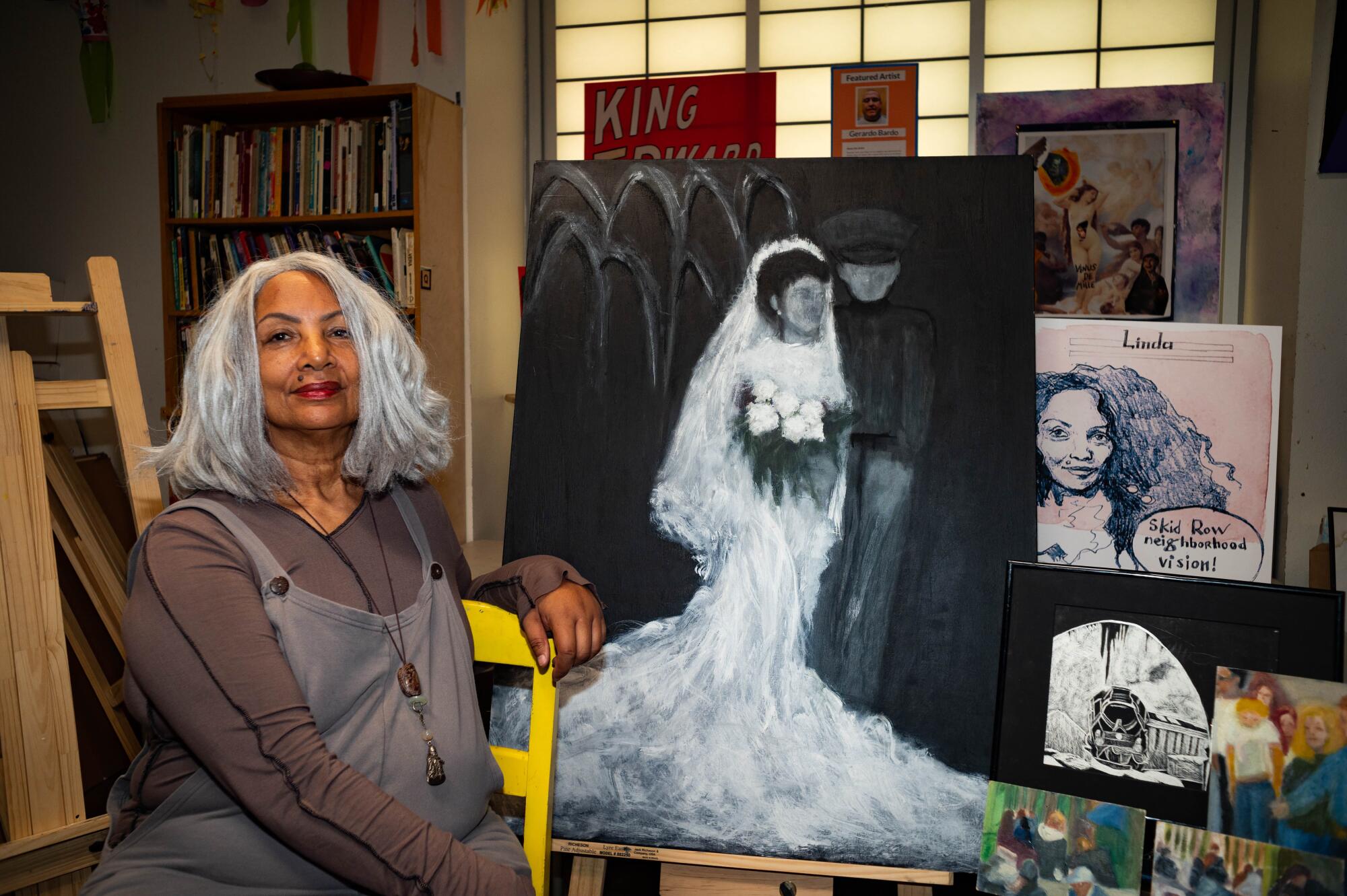
This is my favorite spot [the People Concern’s Studio 526]. This is where home is for me. This is where I had the sense of community, where I’m not only working, but I’m socializing. Lots of friendships. Learned a lot of different things, not just with the art that I do, but I learned how to do zines, I learned how to make books, we did creative writing and I got published. One thing I learned being in this community is that home is a fallacy. It changes your perspective and you start thinking, “What is home?” You might have an idea of what the home is but not all people have that. [People in this community], they create. Being like in the arts, what they do with the things that we throw away — oh, my God, it’s magnificent. Absolutely magnificent.
Kayo Anderson, minister of music and artistic development with the Row Church Without Walls and Creating Justice L.A.
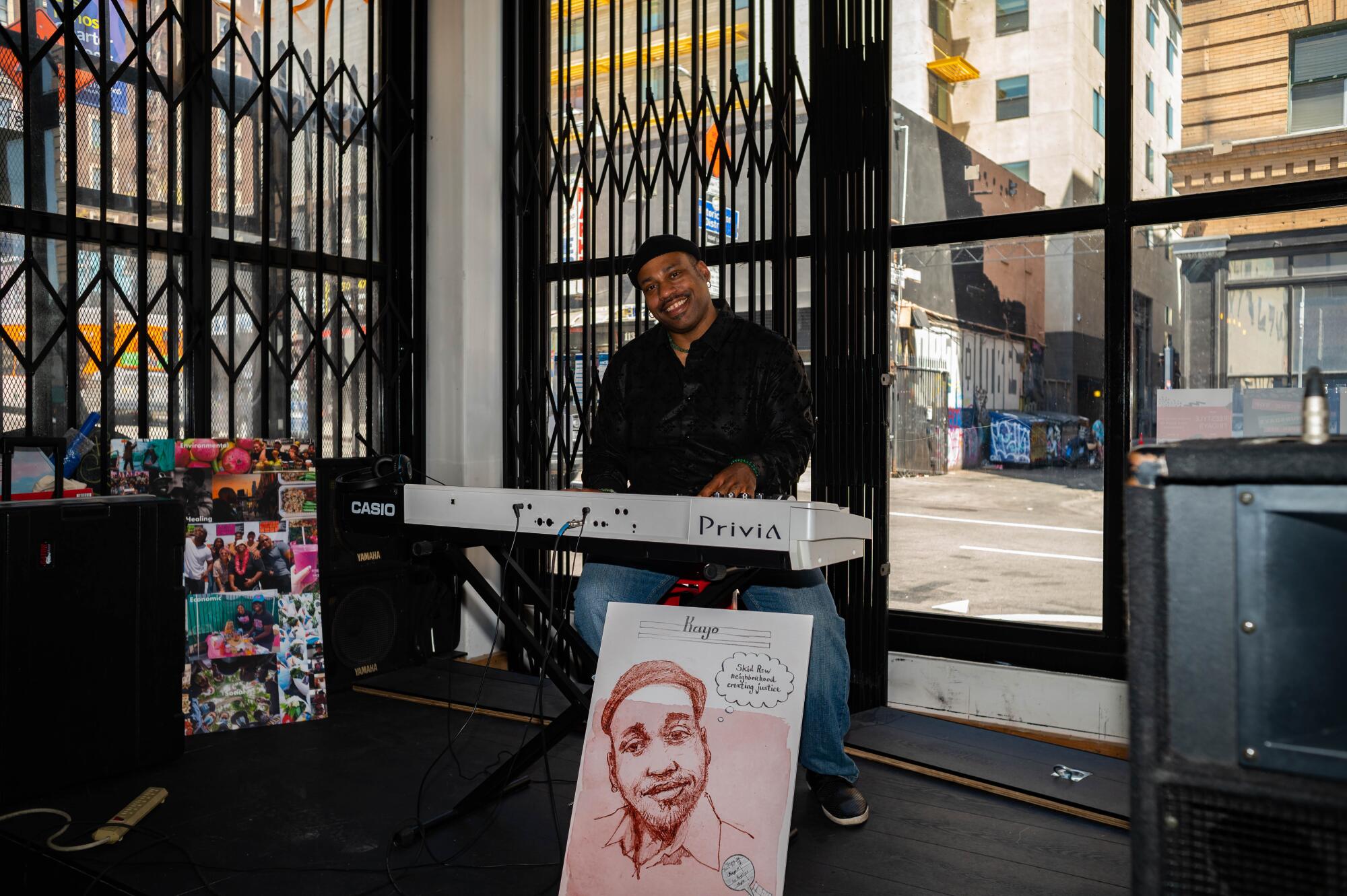
I started the Freedom Singers at Los Angeles Community Action Network. That was really amazing, learning about advocacy. What was missing was a place where the people drive the energy. Now we have the Artivist Village [in the Creating Justice L.A. Peace and Healing Center]. I wanted to pull artists together so we can create collectively, so that everybody’s voice can get out there and be heard and also really charge artists with the activism piece. Music in this community ... I’ve sung many, many times, marched with many, many folks. Every Friday night, I’m out here at 7 p.m. on the street, having church with Pastor Cue. I show up for Skid Row when asked. Period.
Adelene Bertha, senior peer support specialist with the Downtown Women’s Center, co-chair of the L.A. City Skid Row Park Advisory Board and homeless advocate
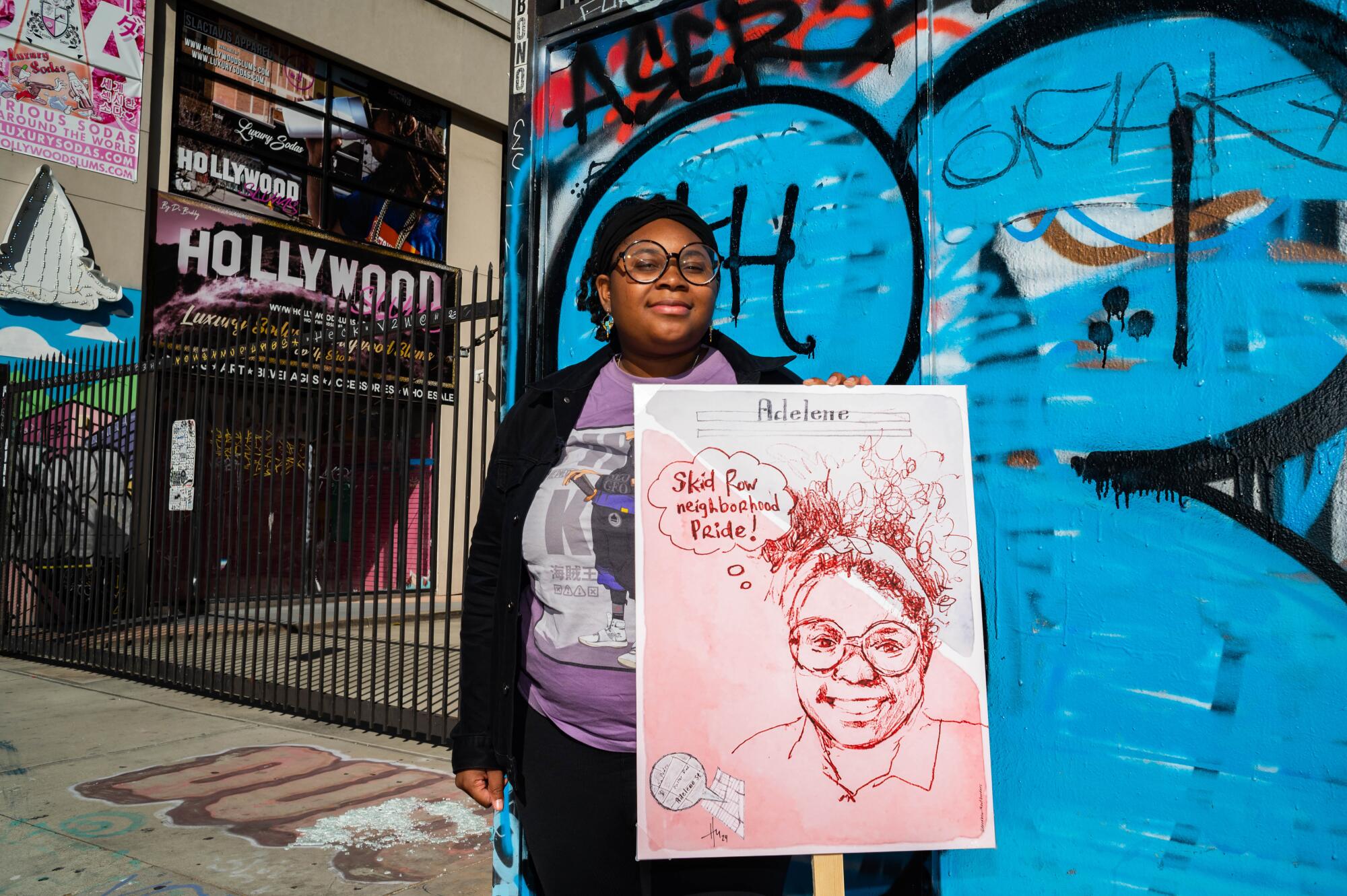
I am a previous Skid Row resident. I’ve stayed in Skid Row since 2014. I started off as a previously homeless youth at the age of 16. The focus of my work has had to do a lot with using my public speaking to talk about the homeless experience for youth in Skid Row, and to connect with women and young girls about my lived experience. I always say that you don’t have to have four walls to feel at home. I didn’t have anywhere that I couldn’t literally call home but I felt like I was home when I was around the people of Skid Row. Their conversations, their interactions, their honesty — because they’ll be honest with you, oh my goodness, they’re not afraid to say whatever they want to say to your face — just them being their authentic self to you made me feel like, this is what home should be like.
“Downtown” Gary Brown, musician, painter and longtime member of Skid Row arts scene
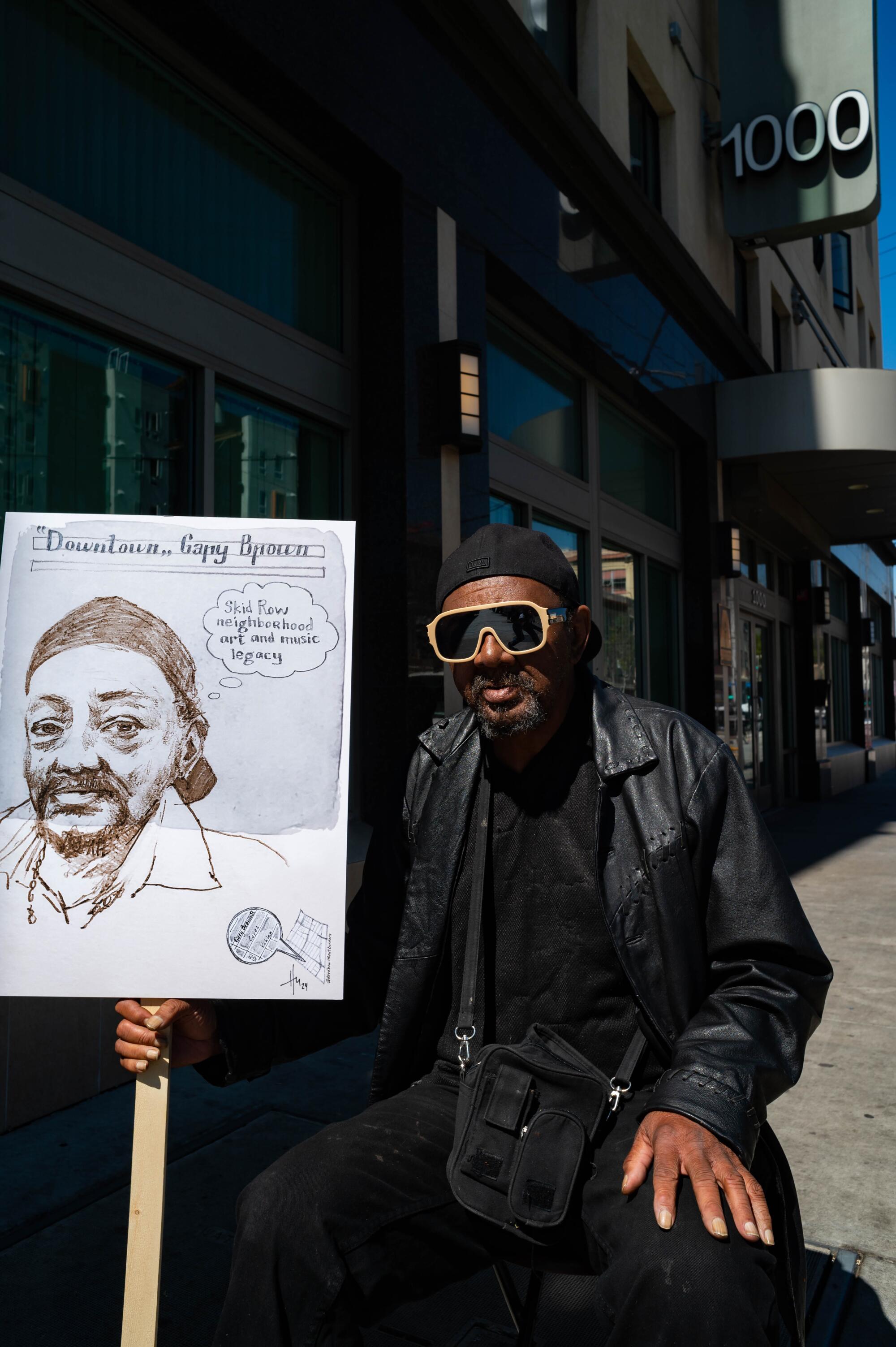
I play keyboards and mostly the percussion or the rhythm section and saxophone. I started playing out in the streets, on Hollywood, on corners, in downtown L.A. Where we are now is a beautiful place, it’s where we started, actually. LAMP [now the People Concern’s Studio 526] used to be right here. It’s significant. It’s the beginning of me getting out of the predicament that I was in in the streets. Artists were coming from everywhere. It was beautiful while it was here. It started in 1999, and in 2003 they moved into [this building]. Ever since 1999 I’ve been involved in that community. It’s always been a great community. It’s a different way of life. I thank God that I’m still able to walk, talk, and haven’t been shot or stabbed. A lot of people take it for granted. Many homeless people are upset or pressed about being in this predicament, but people have strived, the community has come together, we have people demanding our rights. God is on our side.
Clancey Cornell, archival projects manager at Skid Row History Museum & Archive
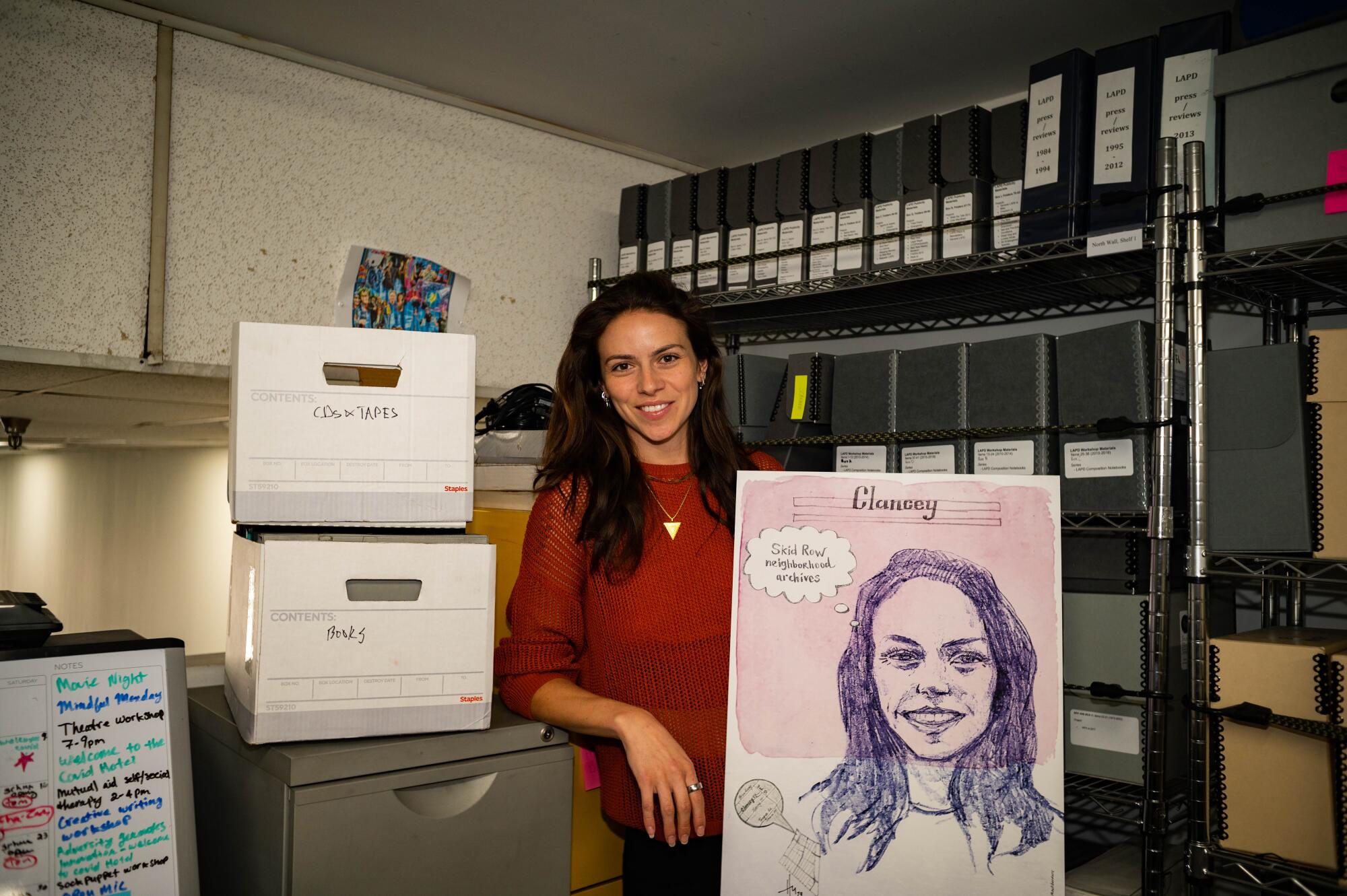
I started first as a volunteer in Skid Row with the LAMP arts program, which is now Studio 526. And then I started volunteering with the Los Angeles Poverty Department. Showing up at the art studio every week, I found myself deepening into the community and making a lot of friends and finding myself in this position of supporting community events that wanted to happen here. Gary Brown and Linda Leigh specifically frequented the arts programs, so that was my entry point into Skid Row. I had an interest in community archives and radical archives because I was someone who loves history, social justice and art. I started to get really interested in the power of archives as an activist tool for justice and for healing and memory preservation. There’s a stereotype around Skid Row that it’s a transient community of unhoused folks: people are just passing through or people who hit rock bottom and stay there. What you learn over time and being in this community is that a bit of that is true — people do land in Skid Row, you could say — but people also live in Skid Row, make it their life and their community.
Sieglinde von Deffner, L.A. County Skid Row coordinator for the Department of Health Services
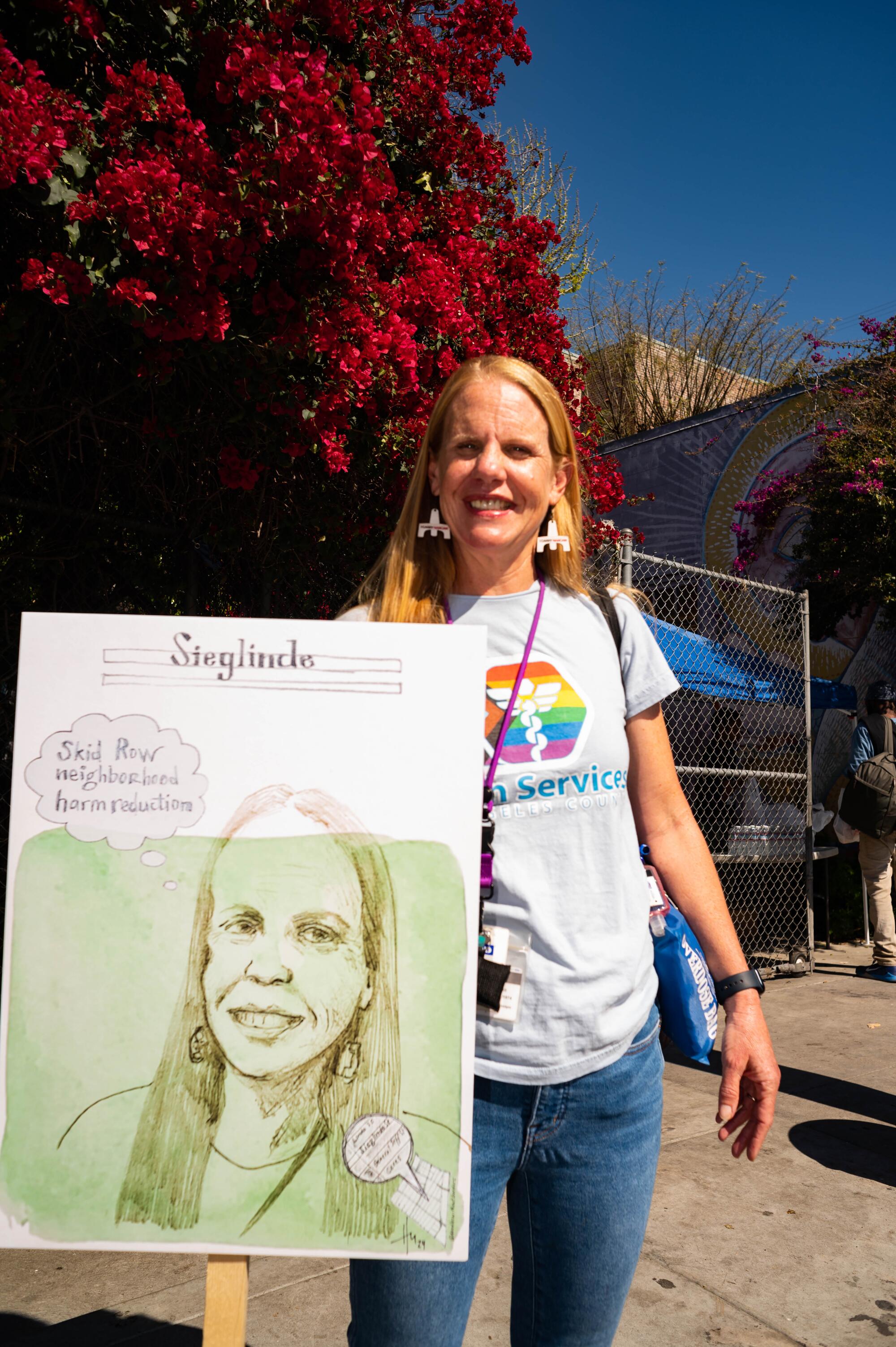
You have to love this place. You have to start with loving. There are many people who didn’t speak to me for the first two years, because the one thing I’ll tell you is everybody’s watching. Are you going to do what you said you were gonna do? What are you really doing out here? Let me watch you before I even get to the point of words. There is more love, caring and giving from one person who has nothing to another than I’ve ever seen in my life. We’ve forced people into just the most basic of survival skills, so there are also challenging acts of brutality, because of the conditions we forced people to live in. [But] this is a community that looks out for each other. We have to remember that home and community is everybody.
Lorinda Hawkins Smith, actor, singer, video maker, author, playwright and advocate against domestic violence

I’m an artivist, which means I marry being an activist to art. In whatever we are touching, there’s gonna be an activism component. [I’m producing] a play. It’s been a fight in some ways because I want theater to be accessible and I know we struggle. Even our theater company, just having enough money to even put on the show. But what is the point of putting on a show if everybody can’t see it? I was living in a [single-room occupancy] in Skid Row, married, my husband was property managing that building. And my son was living with us in his last year of high school. My son made it into U.C. Berkeley. I was doing an open mic event downtown, and we wanted to help my son financially, so we were asking for people to give at the open mic. But then in the place where I was living in Skid Row, they did so much more. Here are people who have the least, doing the most.




